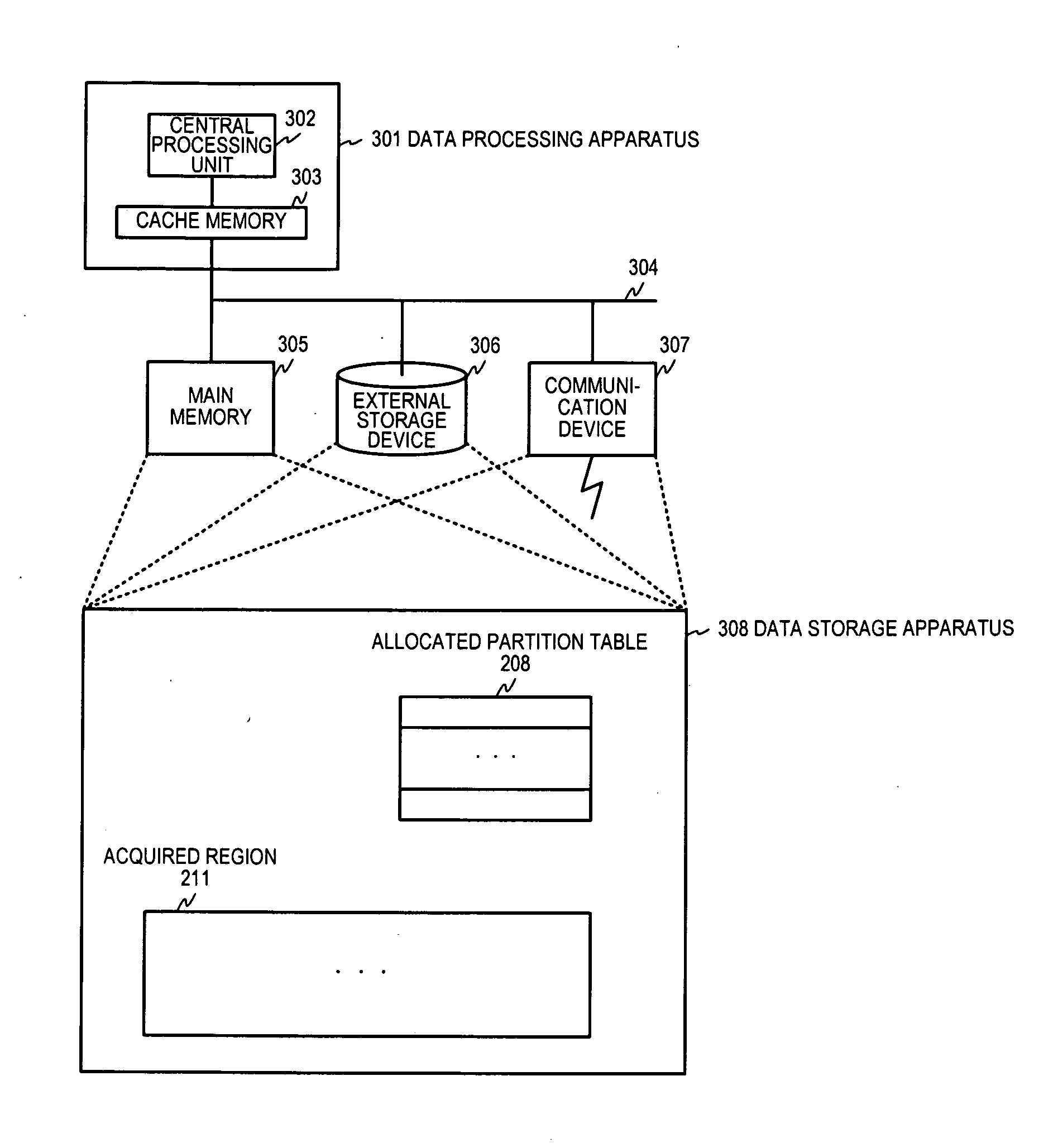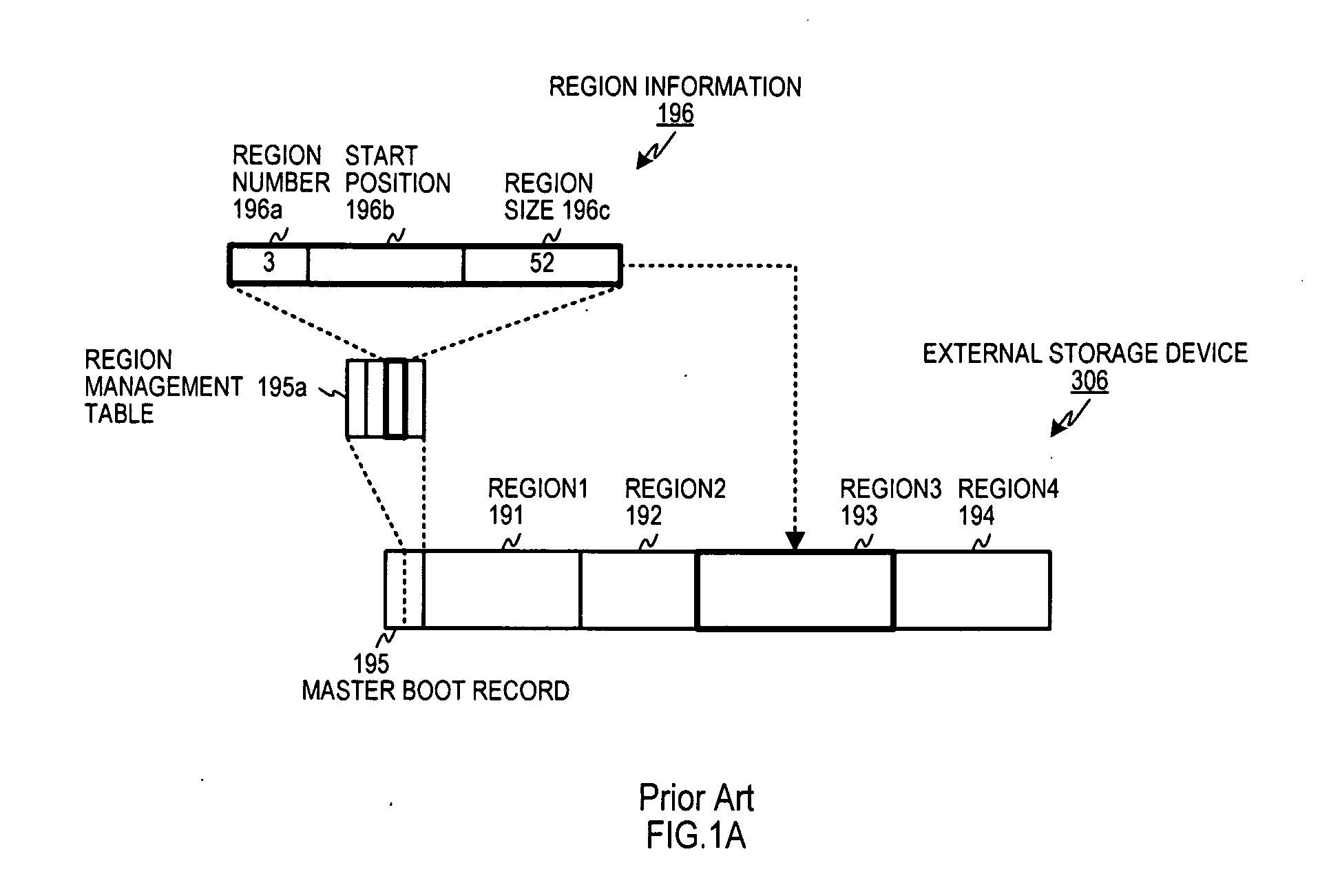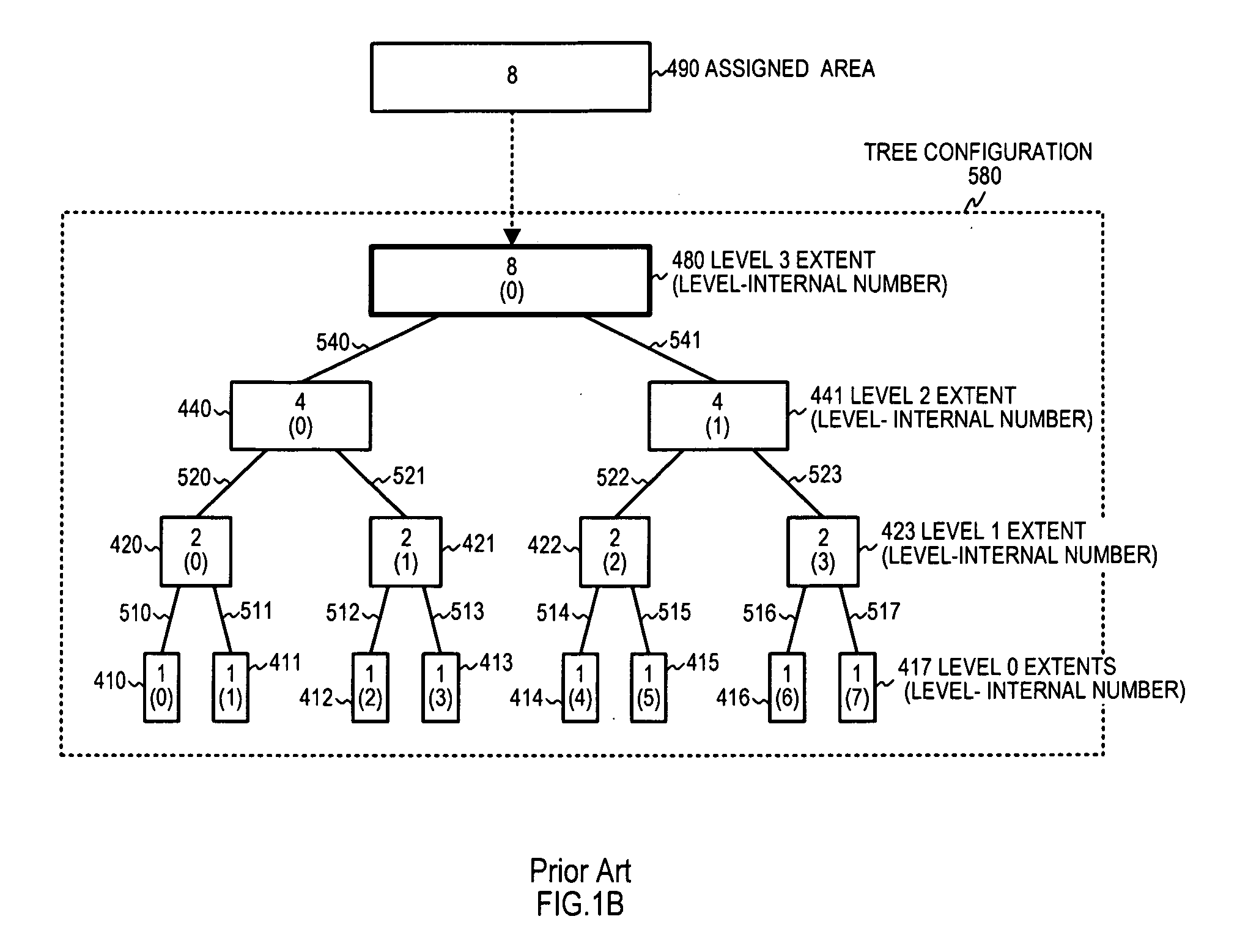Storage region management method, storage region allocation method and program
a storage region and management method technology, applied in the field of storage region management, can solve the problems of ineffective utilization of memory space and unusable areas, and achieve the effect of effective management and effective utilization of storage areas
- Summary
- Abstract
- Description
- Claims
- Application Information
AI Technical Summary
Benefits of technology
Problems solved by technology
Method used
Image
Examples
embodiment 1
[0069]Hereinbelow, preferred embodiment 1 of this invention is described referencing FIG. 3A to FIG. 3C. This preferred embodiment acquires the allocation size for a region, and computes a sum of mutually differing powers of 2 from the allocation size, and the region undergoes a primary partition into primary segments whose sizes are the computed mutually differing powers of 2 and is managed for each of the primary segments that are the result of the primary partition. There is no restriction on the method to acquire regions, and, as was noted above, they can be acquired by means of the above noted unshown utility program like a disk allocator or other such means, and it is sufficient to be provided the start position of a region and its size.
[0070]FIG. 3A is a drawing describing an overview of the primary partitioning (initial allocation) of an acquired region and its management in preferred embodiment 1 of this invention.
[0071]The example in FIG. 3A shows the relationship between ...
embodiment 2
[0088]FIG. 4A is a drawing describing an overview of the acquisition of a segment with the requested allocation size, and releasing unused segments in preferred embodiment 2 of this invention.
[0089]FIG. 4A shows the relation between requested allocation size 20a, which is not equal to a power-of-2 size, and the segment 80 that is acquired based on that allocation size, and the relations among the segments 1 to 4 (81b, 83b, 84c, 82c) that are multilevel-partitioned out of the acquired segment 80. The significant bit positions in requested allocation size 20a are bits 3 and 1, and thus the requested allocation size is 2 to the 3rd power plus 2 to the 1st power=10.
[0090]If a plurality of significant bits exist, in other words, if the requested allocation size is not a power-of-2 size, one position higher than the highest order significant bit position 3 in requested allocation size 20a, that is, the position 4, becomes the allocated partition level 44a.
[0091]Then, as shown by the dott...
embodiment 3
[0178]FIG. 10 is a drawing showing an example of the detailed flow in step S904 shown in FIG. 9 and it describes an example of the processing flow for acquiring an available extent in preferred embodiment 3 of this invention. The example of processing flow shown in FIG. 10 is one that corresponds to the processing flow for preferred embodiment 2 of this invention shown in FIG. 5B.
[0179]As shown in the drawing, first, in step S1022, an extent with an available status is sought for within the partition level. The partition level is the one set at step S900 or step S907a shown in FIG. 9. Next, at step S1023, a determination is made whether any available extent exists in the partition level. If there is no available extent, the acquisition is taken to be a failure and processing is terminated.
[0180]Conversely, if the determination at step S1023 is that there is an available extent at the partition level, processing proceeds to step S1026, and an allocation number with an available statu...
PUM
 Login to View More
Login to View More Abstract
Description
Claims
Application Information
 Login to View More
Login to View More - R&D
- Intellectual Property
- Life Sciences
- Materials
- Tech Scout
- Unparalleled Data Quality
- Higher Quality Content
- 60% Fewer Hallucinations
Browse by: Latest US Patents, China's latest patents, Technical Efficacy Thesaurus, Application Domain, Technology Topic, Popular Technical Reports.
© 2025 PatSnap. All rights reserved.Legal|Privacy policy|Modern Slavery Act Transparency Statement|Sitemap|About US| Contact US: help@patsnap.com



